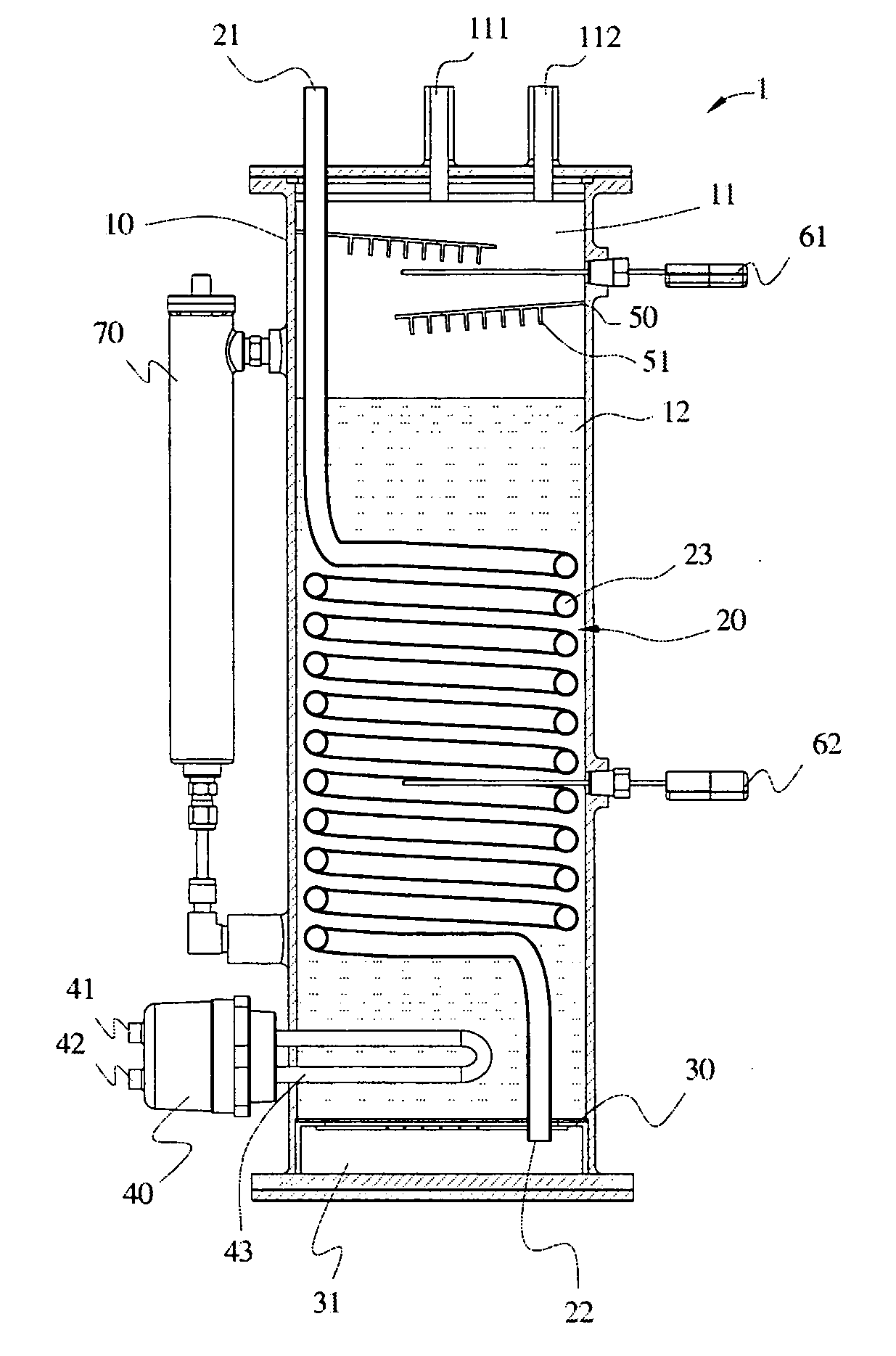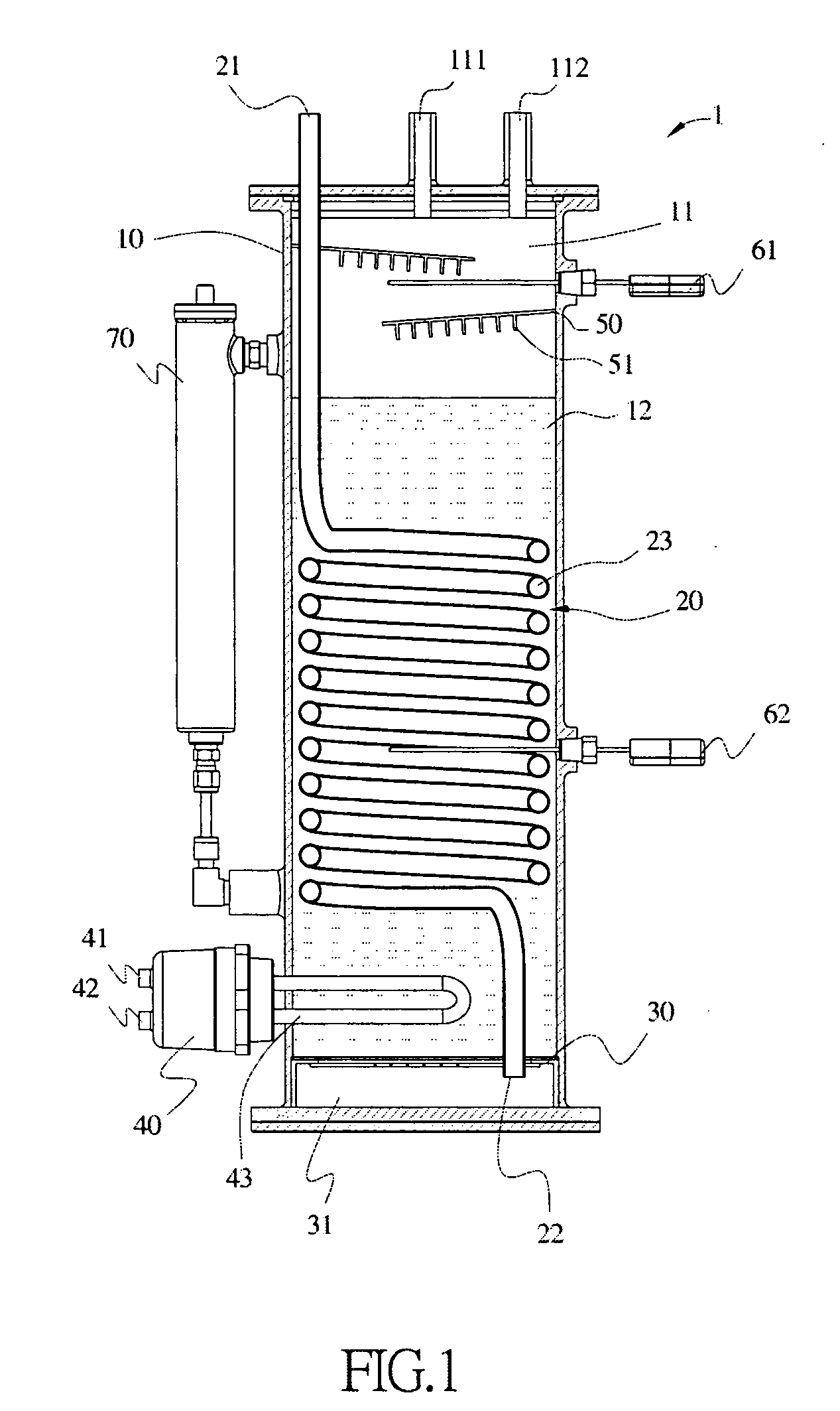External gas humidifier for fuel cell
a fuel cell and gas humidifier technology, applied in combustion-air/fuel-air treatment, separation processes, combustion-air/fuel-cell treatment, etc., can solve the problems of unfavorable control and regulation of humidification amount, complicating pipeline design and connection to the fuel cell, and increasing the moisture content of reactant gas within a short time. , to achieve the effect of increasing the temperature and humidity of the reactant gas, enhancing the power generation efficiency and service life of the pem
- Summary
- Abstract
- Description
- Claims
- Application Information
AI Technical Summary
Benefits of technology
Problems solved by technology
Method used
Image
Examples
Embodiment Construction
[0011]Please refer to FIG. 1 that is a schematic view of an external gas humidifier for fuel cell 1 according to a preferred embodiment of the present invention. For the purpose of simplicity, the external gas humidifier for fuel cell 1 is also briefly referred to as the gas humidifier 1 throughout the specification, the abstract, and the appended claims. The gas humidifier 1 of the present invention is mainly used to heat and humidify a reactant gas for a fuel cell (not shown). The reactant gas may be hydrogen (H2) or air. A fuel cell mainly consists of a proton exchange membrane (PEM), a catalyst layer, a gas diffusion layer (GDL), and a bipolar plate. When a proton exchange membrane fuel cell (PEMFC) operates, an oxidation reaction of hydrogen (H2) occurs at the anode while a reduction reaction of oxygen (O2) occurs at the cathode. First, the reactant gas is catalyzed by a catalyst, so that hydrogen is decomposed into hydrogen ions (H+) and electrons (e−), as indicated by the fol...
PUM
| Property | Measurement | Unit |
|---|---|---|
| pore size | aaaaa | aaaaa |
| temperature | aaaaa | aaaaa |
| angle | aaaaa | aaaaa |
Abstract
Description
Claims
Application Information
 Login to View More
Login to View More - R&D
- Intellectual Property
- Life Sciences
- Materials
- Tech Scout
- Unparalleled Data Quality
- Higher Quality Content
- 60% Fewer Hallucinations
Browse by: Latest US Patents, China's latest patents, Technical Efficacy Thesaurus, Application Domain, Technology Topic, Popular Technical Reports.
© 2025 PatSnap. All rights reserved.Legal|Privacy policy|Modern Slavery Act Transparency Statement|Sitemap|About US| Contact US: help@patsnap.com


